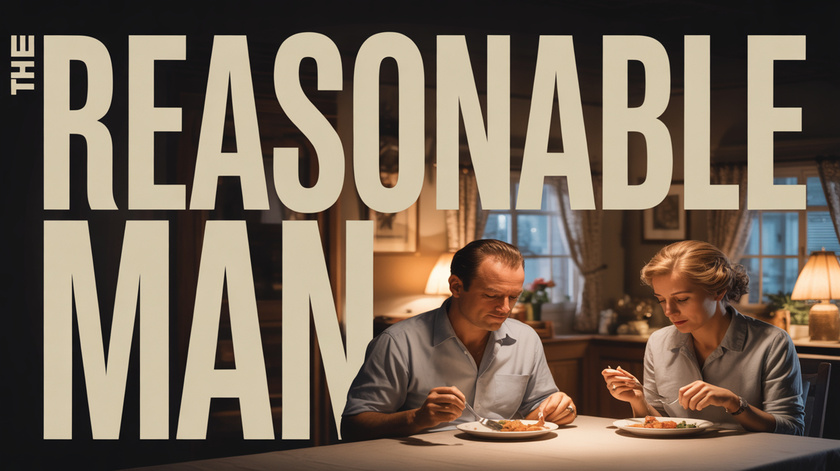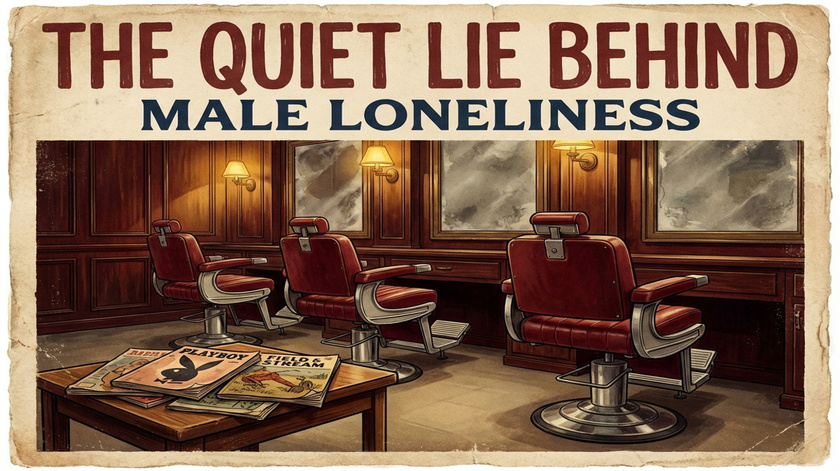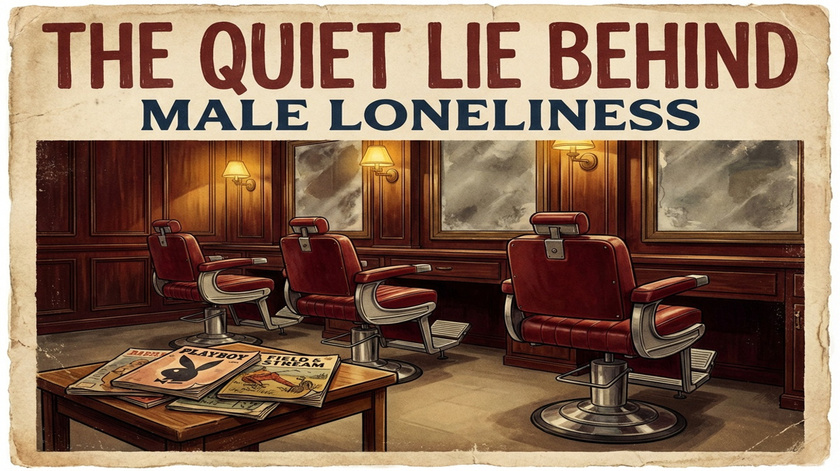The first post in this series offered an exercise to help understand the presence of your own gynocentrism. You can see that one here. The second detailed the many different ways that gynocentrism functions in our world, from relationships to legislators, courts, and beyond. This post will be in two parts. The first part will examine how women have used gynocentrism in relationships by leveraging their gynocentric advantage to influence their male partners. The second part will explore the lethal weaponization of gynocentrism by feminists.

Men and Gynocentrism
To understand this process, it's essential to examine how men are influenced by gynocentrism. Testosterone drives men to seek status, which is crucial in attracting women as mates. Higher status means more reproductive choices. Because of this, men strive to impress women to earn their admiration, working hard to prove their high status. Men seek women's approval and avoid their disapproval, as both impact their perceived status. This is driven by biological imperatives.
Equally significant is the social conditioning over thousands of years, where men are taught to prioritize providing for and protecting women. From a young age, cultural norms emphasize respecting and supporting women, reinforcing men's role as providers and protectors. These biological and social factors combine, creating a powerful, instinctual drive in men to support, protect, and demonstrate their value as capable problem-solvers and valuable assets to women.
But wait. Do women have a similar drive to do anything like this for men? I don't think so. While men try to impress women with status in order to gain reproductive access, women's strategy often involves working to be more attractive. The female-dominated cosmetics industry produces over $66 billion a year in products. For perspective, the combined incomes of the NFL, MLB, NHL, and NBA are about two-thirds of that amount ($45 billion).
Gynocentrism impacts both men and women in how they see and navigate the world, particularly in relationships. Let’s get started.
Getting What You Want
While men and women share many similar ways to get what they want in relationships, there are significant differences that start early. One research study by Michael Lewis showed that when 1-2-year-old boys and girls were separated from their mothers by a barrier, they had very different strategies to get back to their moms. The boys would try to knock down the barrier, while the girls would usually sit down and cry.1 These boys took an active strategy, while the girls chose a passive response.
Another example is the classic research of Savin-Williams,2 which showed that boys and girls employed very different strategies in forming hierarchies at a summer camp. The boys were aggressive and challenging each other both physically and verbally to quickly develop a hierarchy in the first couple of days. This told them who was on top and who was not. The girls were different. They were sweet to everyone for the first week but then began using passive relational aggressive techniques to form their own hierarchies. This included gossip, false accusations, selective inattention, and other modes to attain dominance in their group. The girls formed their hierarchies in a more passive and cloaked manner. One hallmark of relational aggression is that it is easily denied with statements like "I didn't mean it like that" or "I was just kidding." This is very different from overt aggression, which is difficult to deny.
We can't draw too many conclusions about these two studies and their impact on adult behaviors in relationships, but we can start to see a pattern. The boys take a direct route, including physical action and aggressiveness, while the girls took a more indirect or passive stance. In relationship troubles, men often take an active stance, usually logic/problem-solving based (what I think), while women are more likely to take a passive stance that is often emotion-based (what I feel/want). Importantly, the female emotional path is nearly always connected to gynocentrism. Yes, women have leveraged gynocentrism to get what they want in relationships.
These behaviors harness the power of gynocentrism to work in her favor. Here's an example:
She wants something, he says no, he doesn't think it's a good idea, and he offers his reasons why. She starts crying. What does this do? It puts him on alert that he is failing to provide/protect and meet her needs. It also shifts the discussion's focus from the topic at hand to her emotional reaction. Now, the focus is on helping her with her tears. Instead of being about the discussed topic, it is now about her! Her hope is that he will shift his position to aid her distress. This is not dissimilar to the 1-year-old girls who, when faced with an obstruction, would simply sit down and cry. What makes this strategy successful? It relies on gynocentrism. The man has an urge within that tells him he needs to meet her needs, to keep her safe and provided for. When it appears he is failing to meet those needs, it sets off warnings in his head that he is not fulfilling his mission. This can be a huge factor in his decision of what to do. Unless he is aware of this inner alarm, the danger is that he will act on it without thinking. He will therefore be much more likely to want to give her what she wants and to ignore his own logic and problem-solving, and his own needs.
But there is more that goes on when a woman's tears start flowing. It is doing more than just shifting the ground of the discussion to her needs. The tears have a direct impact on him. We have known for many years that a man's testosterone actually goes down when the woman cries!3 Women seem to be aware of the power of their tears and use them as needed. So it seems that men in an argument with their spouse can be at a distinct disadvantage both psychologically and physically. But the man still has his power and can still say no, even with the tears and the inner alarm. He can stick to his guns. In some ways, it's a fair fight.
Other ways for women to leverage gynocentrism include things like damseling. This is a strategy that makes one appear to be tied to the railroad tracks with the train coming! Help me quickly! I am in immediate need. Hurry. This strategy calls on the man to save her from some disaster. The tactic alerts him that this is something that needs his attention immediately. Again, the man feels the urge to save her, to keep her safe, and will leave his logic and problem-solving skills behind as he gives up on his own needs to save her from the disaster.

So, do men give up their own needs to satisfy their partner's upset? Yup. Anyone who fails to believe this should follow husbands in the midst of a difficult divorce. Time and again, I see some of these men giving away the farm to help their wives while they are left with very little. They are literally in a huge battle for resources, and he sometimes fails to consider his needs and instead wants to satisfy hers. In talking with these men afterward, they will often say something like, "I wanted to help her and to hope she realizes that I care." If one didn't understand the dynamic of gynocentrism and its impact on men, his actions would seem insane.
Emotional outbursts, flirting, emotional appeals, nagging, tantrums, and other forms of relational aggression are used to amplify and justify her need, and all of this is seen as important due to gynocentrism. The emotion alerts the man that she is in need. He senses his own desire to provide for her. The man will think that he is failing to provide and protect if she is left in need, or worse yet, others will find out he is not meeting her needs and will see him as deficient, and he will be publicly shamed. Could this ever go in the opposite direction, with men using emotion to encourage the woman to give him what he wants? Probably much less often. Firstly, men are not generally allowed tender emotions, largely due to gynocentrism. He is the one who is responsible, and for him to appear emotional and needy is a cultural no-no. Secondly, she does not have the same urge to keep him safe and provided for. It simply wouldn't work. He knows it and won't try it. She knows that these tactics do work for her and also realizes that he has that inborn need to provide and protect her.
This dance between men and women has been going on for ages. Both men and women have found ways to navigate relationships with conflicts that have gynocentrism just beneath the surface. Again, in some ways, this is a fair fight.
Weaponizing Gynocentrism
But when does it stop being a fair fight? That's where the feminists come in. In the early 1970s, feminists began to weaponize gynocentrism. They understood the power of gynocentrism and started introducing pathological elements into the dynamic. Imagine a woman using damseling to get her way. Instead of sticking with the traditional damseling, which men have hundreds of years of experience handling, she starts pathologizing him for not agreeing with her. She implies there's something wrong with him if he disagrees; he must hate women (false accusation). The fight then changes from a disagreement to a question of his character. He gives in. This is the weaponization of gynocentrism. Responding or questioning her becomes forbidden and pathologized. He is declared hateful simply for having a differing point of view. Gynocentrism provides the feminist with a shield to hide behind as she makes overtly false accusations. This gynocentric shield is strong and effective because men are biologically and psychologically wired to provide for and protect women, not to attack them. (never hit a girl) If he attacks, it appears as evidence that her false accusation is accurate. The accusations bind him, preventing him from disagreeing due to his gynocentric need to hold women in high esteem. He can't be seen as a man who hates women. The next time this happens, she uses the same tactic, disallowing any disagreement and labeling him hateful if he disagrees. "No, I don't hate you. I love you. See, I will give you what you want." This is a beginning outline of feminist manipulations.

A feminist says, "Men are pigs." A man disagrees, saying that is not true. She responds, "You just don't understand; you could never understand since you are not a woman." He agrees he is not a woman but maintains that men are not pigs. She says, "If you can't see this, you must hate women!" The conflict shifts from whether men are pigs to the unwinnable arena of whether he hates women. It is nearly impossible to disprove a false accusation, but this man tries and ends up frustrated. He withdraws and stops talking with her. He has been successfully silenced. He now sees it is dangerous to disagree. His mission is to provide for and protect women, and he cannot afford to be outed as someone who willfully goes against that gynocentric law. It might make him look like he hates women. This would be a huge drop in status.
This is what feminism has done on a global level. They have blamed men for nearly every problem a woman might experience, and if any man questions this, they accuse him of misogyny. Feminists believe they are always right, and any dissenting man is part of the patriarchy. When he protests, it is simple to label him a misogynist. All the while, the feminist claims victimhood on cultural, social, psychological, physical, and personal levels. Men are geared to help women who claim victimhood, putting him in a bind if he disagrees.
This kind of manipulation is not new. It has been around for many years. Peter Wright's excellent website gynocentrism.com offers extensive information on gynocentrism's workings. In one article, he quotes Belford Bax, an early anti-feminist writer, from his book "The Fraud of Feminism" (1913):
"Woman at the present day has been encouraged by a Feminist public opinion to become meanly aggressive under the protection of her weakness. She has been encouraged to forge her gift of weakness into a weapon of tyranny against man, unwitting that in so doing she has deprived her weakness of all just claim to consideration or even to toleration."
Bax points out that feminist women over 100 years ago were using this manipulative strategy to silence men. It is an extraordinarily devious yet simple tactic that takes advantage of men's desire to help and serve women. The end result is that men are hog-tied and left in a double bind. If he tells the truth, she will broadcast that he hates women. He can't risk that since it would ruin his reputation. And if he says nothing, she will continue her hate speech. Worse yet, if he agrees with her, then...
Bax said, "forge her gift of weakness into a weapon of tyranny against man." This sums things up. Gynocentrism offers women a facade of weakness that invites men to offer their help and aid. But that facade of weakness now works as a shield due to men's reluctance to "hit a girl." Feminists have been free to fire cannons of shame, blame, and disdain at men while hiding behind a shield of gynocentrism. Gynocentrism allows feminists to hurl damaging and hateful false accusations without hesitation while men are put into a bind that limits their ability to attack the false accusations. Men have many reasons not to fight back against these attacks. The next section will go into more detail about those reasons.




















